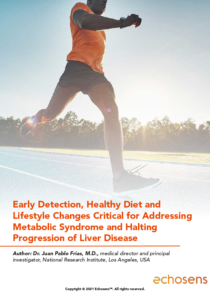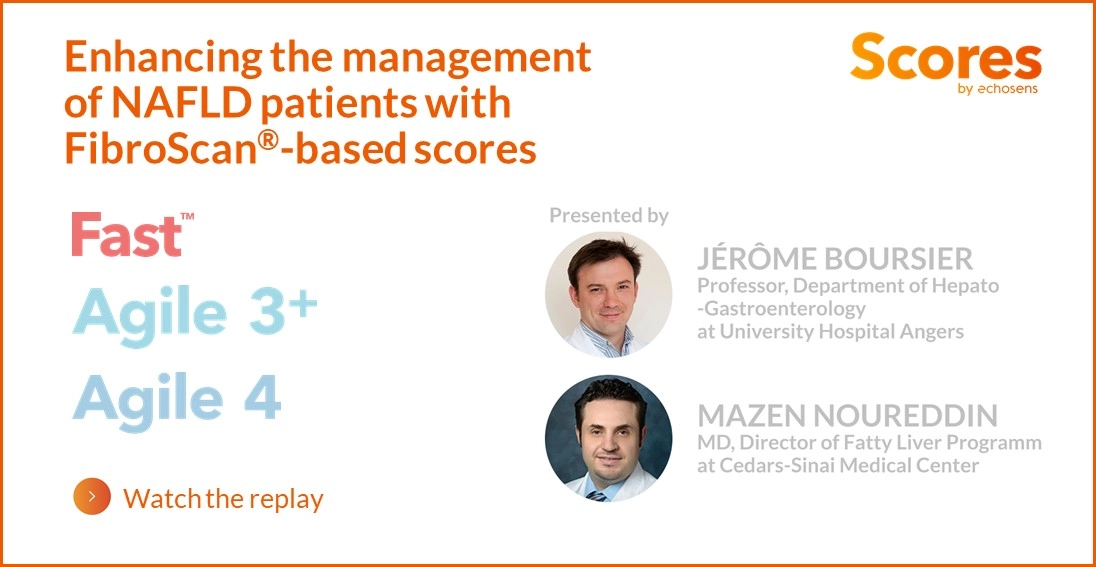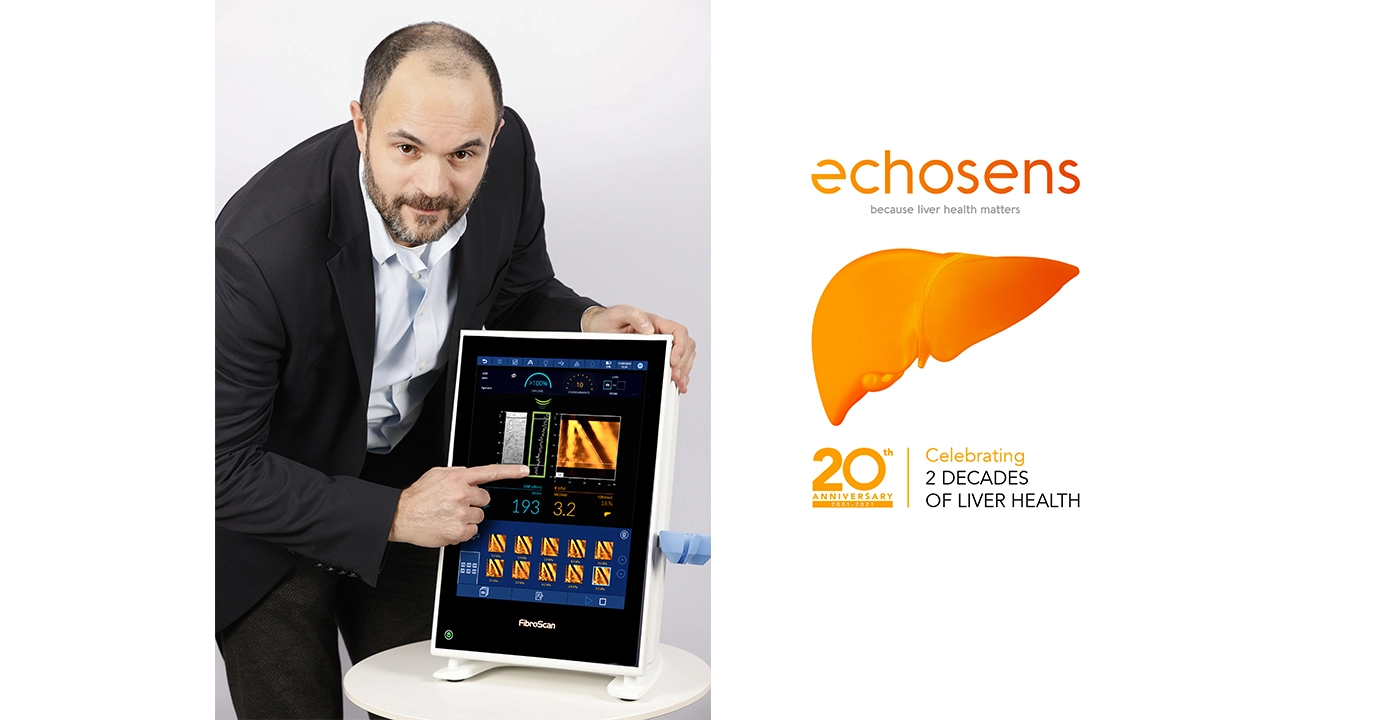The growing prevalence of obesity is fueling increased rates of metabolic syndrome (MetS), and may soon become the main risk factor for cardiovascular disease, ahead of cigarette smoking. The link between obesity, MetS and liver disease stresses the importance of diet and lifestyle changes for preventing disease onset and progression. It also underscores the growing need for non-invasive exams as a routine component of patient management.
A weight loss program combined with FibroScan®, Echosens’ non-invasive examination for the diagnosis and monitoring of adult patients as part of an overall evaluation of liver health, is an effective approach for monitoring the impact of lifestyle changes on liver fat.
NAFLD and MetS
Most people who have MetS are overweight or obese and have insulin resistance, making it more difficult for cells in the body to respond to insulin, triggering blood sugar levels to rise and leading to type 2 diabetes.
Studies show that nonalcoholic fatty liver disease (NAFLD)—the accumulation of lipids in liver cells not associated with the consumption of alcohol—is strongly associated to the features of MetS and that insulin resistance is a key pathogenic factor for both NAFLD and MetS.
MetS components are highly prevalent in NAFLD. What’s more, diagnosis of NAFLD with MetS is an independent predictor of all-cause, liver-specific and cardiovascular mortality. In contrast, mortality of metabolically normal NAFLD patients is similar to the cohort without liver disease.
Critical Information
Industry leaders recognize the value of non-invasive diagnostic exams at the point-of-care to cost effectively gain quick insight into liver health to quantitatively estimate liver stiffness and fat content. FibroScan results provide critical information that enables heath care professionals to make the most informed treatment decisions, while also ruling out the need for an invasive and expensive liver biopsy or other invasive testing.




